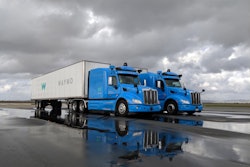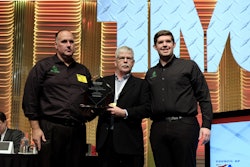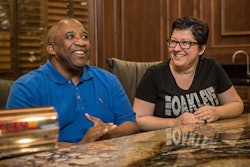
Two months ago, in the middle-of-nowhere, Fla., a person placed a tractor in drive, brought it up to speed and centered the truck in its lane.
Big deal, right? That happens millions of times every day.
But the driver of this truck in particular was about 100 miles away from his tractor.
The truck only travelled seven miles and it didn’t have a trailer attached, but none of that is particularly important right now.
When California-based trucking tech upstart Starsky Robotics ceded control of their truck to a combination of sensors, technology and luck, they became the first player in the space that we know of to oversee an autonomous drive on a public road without a person in the cab.
Autonomous testing happens about every day but there is almost always a person in the seat or in the bunk. That person is there to take over if anything goes awry and they’re also required to be there according to most state laws.
Florida is one of the most autonomous-friendly states in the U.S., having passed laws that allow for the driverless driving of autonomous vehicles in late 2016 – the first such legislation of its kind. California followed suit and expects to begin issuing permits for person-less testing this month.
Starsky Robotics’ system uses software and radar and camera systems for autonomous highway driving, but solves the issue of final-mile delivery by removing drivers from the cab entirely and putting them in an office where they can remotely operate the truck from terminal to delivery.
Such a platform doesn’t make a lot of sense if a person is required to be inside the truck. It essentially requires two people to do the job one person is currently doing. That’s in stark contrast with the company’s mission of allowing one person to do the job currently being done by multiple people.
Starsky Robotics co-founder Stefan Seltz-Axmacher tells me his goal for the platform is to allow drivers located in a central office to bring multiple units up to highway speed before handing control over to the autonomous system. They will then simply overseeing the trucks once they begin driving themselves.
“The [remote driver] should be monitoring the truck at the beginning and end of the trip,” he says. “[Once the truck is in full-autonomous mode] the guy in the office should be paying attention to a number of other trucks.”
Think of it like a security guard in a control room. To monitor every room in an office complex manually, you would need multiple guards. If each room is equipped with a camera, one person can oversee multiple rooms.
The company’s aftermarket retrofit kit robotically controls the throttle, steering and transmission, mirroring the driver’s input from their office. The remote driver uses information from the truck’s cameras and data feed to get a sense of its surroundings.
Last year, Starsky Robotics began using self-driving trucks in yards and major freight lanes, hauling everything from 5,000 pounds of milk crates to 40,000 pounds of tile.
In September, Starsky Robotics completed the longest end-to-end autonomous trip on record, hauling Hurricane Irma recovery aid, including water, 68 miles through Florida with a person in the cab but without their intervention.
Two months ago, that person stepped out of the cab and let the technology do all the work.
It was only seven miles and, yes, it was a bobtail unit but those were seven important miles.
This test demonstrates to the other 40-plus states with less autonomous friendly rules that the technology is ready to hit the road, and it shows that it can be demonstrated with some degree of reliability.
Driverless driving will never make any sense if two-thirds of the interstate system is blocked by legislation. We have a long way to go in making autonomous driving an everyday reality, but as of February 2018, we’re seven miles closer.











